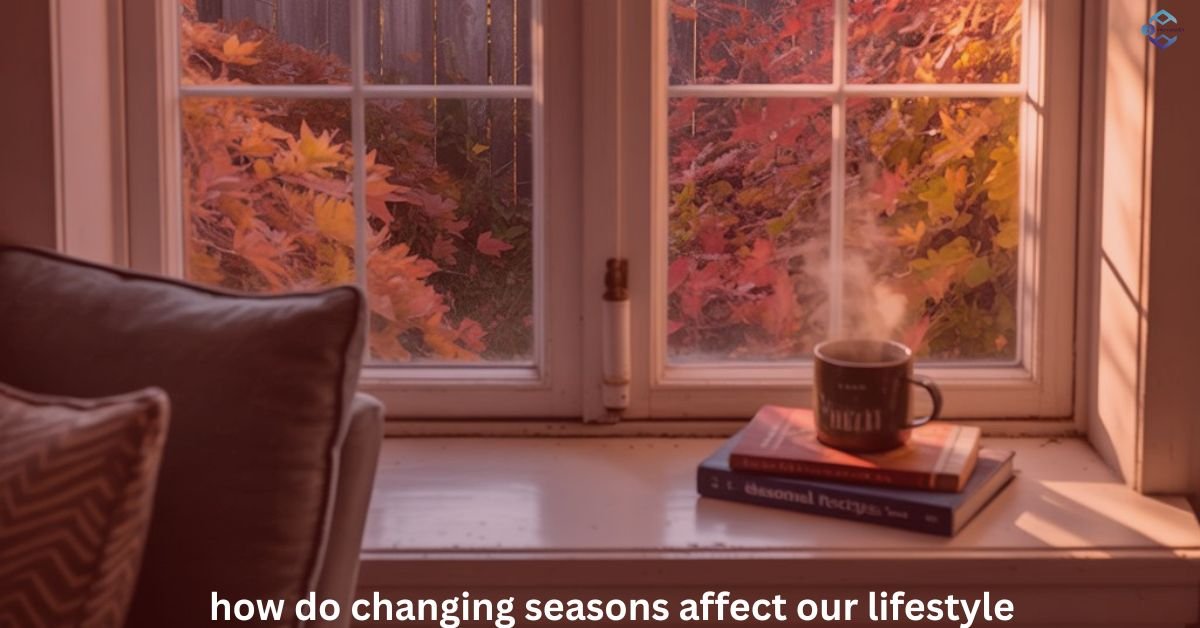Ever wondered how do changing seasons affect our lifestyle in ways beyond just weather? This in-depth article explores the emotional, physical, and behavioral shifts we experience throughout the year. From mood changes and dietary habits to wardrobe transitions and productivity cycles, you’ll discover practical insights based on real human experiences.
Learn how do changing seasons affect our lifestyle through personal stories, expert-backed tips, and seasonal adaptation strategies that promote wellness and balance. Whether it’s spring’s energy or winter’s calm, every season brings its own influence on our choices, routines, and health. This guide helps you understand these subtle but impact full changes, allowing you to live more mindfully all year long. Perfect for readers seeking a lifestyle rooted in nature’s rhythm, this article invites you to embrace the beauty of seasonal living with intention, awareness, and ease.
Introduction
Life moves in rhythm with nature. As seasons shift from the bright intensity of summer to the quiet cold of winter, our bodies, emotions, routines, and choices also shift. These changes are not just practical, like swapping wardrobes or adjusting thermostats they’re deeply human experiences that affect our physical health, mental wellness, productivity, social lives, and even our sense of identity.
Seasonal Changes and the Human Body

Temperature and Energy Levels
When summer arrives, the warmth and longer days often boost our vitality. Most people naturally feel more awake and energized due to increased sunlight exposure. Activities such as early morning jogs, evening walks, or casual strolls after dinner become part of the lifestyle. But in winter, many individuals feel a significant drop in physical energy. Cold weather prompts the body to conserve heat and calories, often resulting in lethargy. People might choose to sleep more, skip workouts, or spend longer hours under blankets. From a human experience, this isn’t laziness it’s adaptation.
Immune Response and Health Conditions
Colder seasons also increase susceptibility to colds, flu, and joint stiffness. Personal stories from across the globe echo similar trends: older adults notice increased joint pain in cold climates, while children are more prone to respiratory infections during seasonal transitions. On the other hand, spring often brings allergies due to pollen. People with asthma or sinus issues typically experience discomfort during this time. Understanding these seasonal health fluctuations helps us prepare and proactively manage our wellbeing.
Emotional Health and Seasonal Influence
Mood Swings and Light Exposure
Ever wonder why you feel more optimistic during spring or why winter makes you feel melancholic? It’s not in your head our emotional state is heavily influenced by daylight. Shorter days in winter can cause Seasonal Affective Disorder (SAD), a condition marked by depression-like symptoms including sadness, social withdrawal, and sleep changes. This is linked to a reduction in serotonin levels and disruption of our circadian rhythm. Summer, however, often brings emotional highs. More sunlight means better moods, increased dopamine, and higher social interaction. It’s also why many people report feeling ‘alive’ during the summer holidays.
Real-Life Experiences
Diet and Seasonal Nutrition Patterns
Eating with the Weather
We don’t just eat for nourishment we eat to feel good. And how we eat shifts naturally with the seasons. In summer, our appetite typically decreases. People gravitate towards lighter, water-rich foods like fruits, cucumbers, smoothies, and salads. Warm weather also increases the need for hydration, and beverages like lemonade, coconut water, or chilled herbal teas become popular. In winter, we crave hearty meals soups, stews, roasted vegetables, hot chocolate, and energy-dense foods. This isn’t just preference; it’s our body’s way of preparing for cold weather by storing more energy.
Cultural Reflections
In many cultures, seasonal dishes are deeply rooted in tradition. For instance, “Sarson ka Saag” and “Makki di Roti” in Punjab are winter staples, while mango-based foods and drinks dominate South Asian summers. These foods don’t just satisfy the palate they align with the body’s natural needs.
Seasonal Wardrobe Transitions
Dressing for Comfort and Function
How we dress is one of the most visible ways seasons affect our lives. In spring and summer, we prefer breathable fabrics, bright colors, and airy designs. Cotton, linen, and rayon dominate closets, and sandals replace closed shoes. Winter demands layers woolen coats, thermal wear, scarves, gloves, and boots. People invest in warm yet stylish clothing to balance fashion and functionality. The change in wardrobe also brings psychological satisfaction many describe the joy of pulling out winter coats or summer dresses as a small seasonal ritual.
Work-Life Balance and Seasonal Productivity
Mental Alertness and Professional Output
Productivity isn’t just a result of motivation it’s affected by seasonal patterns. During summer, longer daylight boosts alertness and focus. Studies and real-life workplace feedback show increased output in spring and early summer compared to winter.
Winter, however, sees dips in concentration and energy. Overcast skies and shorter days can demotivate individuals, especially in desk jobs. People working remotely or in creative fields often report reduced inspiration during colder months.
Remote Workers’ Insight
Remote workers, particularly those in colder regions, often emphasize the need for structured routines during winter to maintain productivity. Natural light lamps, morning yoga, or scheduled video calls are some ways people combat seasonal dips in motivation.
Social Life and Seasonal Activities
Outdoor vs. Indoor Engagements
Warmer seasons draw us outdoors. Parks fill with joggers, beaches see families, and cities come alive with festivals and events. People are more likely to initiate plans, meet friends, or attend weddings and cultural programs. Winter encourages indoor bonding movie nights, reading marathons, home-cooked meals, and family conversations. While some may find this comforting, others struggle with feelings of isolation or cabin fever, especially in colder climates with prolonged snow.
Seasonal Travel Patterns
People plan travel according to seasonal advantages. Spring and summer are ideal for beach vacations, mountain treks, and international travel. Autumn, with its golden foliage, is perfect for scenic drives and romantic getaways. Winter is preferred for skiing, snowboarding, or visiting cozy cabins. However, extreme weather also increases travel challenges like flight delays, road closures, and health risks. This forces people to be more cautious and strategic in travel planning.
Children, School Life, and Seasonal Influence

Children’s behavior and learning rhythms are also season-sensitive. Warmer seasons often mean improved participation in sports, art, and outdoor activities. Schools plan field trips and camps during these months. In colder months, schools emphasize indoor learning, and attendance may drop due to health issues. Parents adapt by ensuring kids stay active indoors and maintain mental stimulation despite environmental restrictions.
How Do Changing Seasons Affect Our Lifestyle on a Deeper Level?

Changing seasons impact more than just the weather—they shape our habits, emotions, and overall way of life. As temperatures rise or fall and daylight hours shift, we instinctively adjust everything from our sleep patterns to our eating habits, clothing choices, and social behavior. For many, summer brings energy and outdoor activity, while winter invites reflection, comfort food, and indoor routines. These transitions are often subtle but deeply felt.
Understanding how do changing seasons affect our lifestyle helps us become more aware of the natural rhythms that guide our mental health, physical well-being, and daily decisions. Embracing these changes instead of resisting them allows us to create healthier routines, build emotional resilience, and live more in sync with nature’s cycles. Real-life experiences and seasonal self-awareness remind us that adapting isn’t a struggle it’s a powerful tool for mindful, balanced living.
Home Life and Seasonal Interior Adjustments
Even our homes change with the seasons. In spring and summer, we open windows for fresh air, decorate with lighter colors, and invest in cooling systems. Winter invites warm lighting, thicker curtains, area rugs, and cozy corners. People personalize their homes according to comfort and need something rooted in both necessity and emotional expression. Many families consider winter decor and lighting a way to counter the external gloom and add a sense of joy.
Frequently Asked Questions
How do seasons affect our daily routine?
Seasons influence sleep, energy levels, diet, physical activity, and social engagement. People tend to be more active and social in warmer months and more introspective or less energetic in colder ones.
Can weather really affect mental health?
Yes, seasonal affective disorder (SAD) is well-documented. Reduced sunlight in winter can cause depression, while summer may uplift mood due to increased exposure to natural light.
What are some practical ways to adapt to seasonal changes?
Create routines that match the season light therapy in winter, hydration in summer, balanced diets, wardrobe changes, and scheduled physical activity to maintain wellness year-round.
How do changing seasons affect children?
Children often become more active and socially engaged during spring and summer. In winter, their physical movement may decrease, and they may experience mood changes or restlessness.
Do seasons affect workplace productivity?
Yes, productivity often peaks in spring and summer. In winter, motivation and focus may drop due to less light and lower temperatures. Planning routines and workspaces can help offset this effect.
Conclusion
Changing seasons are not interruptions they are invitations. Each season presents new opportunities for growth, reflection, rest, and action. From lighter foods in summer to slower moments in winter, these transitions allow us to live more intuitively and purposefully.
Human experiences across generations show us that adjusting to seasonal changes isn’t just survival it’s about thriving with nature’s rhythm. By being mindful of how seasons influence our thoughts, actions, and choices, we can live more connected, healthier, and more fulfilling lives all year round. Embrace the sun, respect the snow, listen to the wind, and flow with the rain. The seasons aren’t just outside us they live within us.
Also Read
Grace Fashion: A Journey Through Elegance and Everyday Confidence
Gothic Fashion Dresses: A Deep Dive into Elegance, Rebellion, and Dark Romance
Harajuku Fashion Styles: A Colorful Expression of Japanese Street Culture
















Leave a Reply